032420_YKMV_A6.pdf








shop online at www.missourivalleyshopper.com
March 24, 2020 • Page 6
Salute to
Agriculture
Farming For Sustainability
Understanding Tillage
Have you ever seen
a vintage photo or
illustration of a farmer
laboring in the field with
an ox-drawn plow? It
would take a farmer with
one ox about one day to
plow a single acre!
Fortunately,
farm equipment has
progressed—as have
farming practices. Today’s
farmers use a variety of
tillage implements and
strategies, depending on
their specific situation.
Brad Ruden, agronomy
tech services manager at
Agtegra Cooperative says,
“Growers are trying to get
the most productivity they
can out of their soils. It
may mean no-till in some
areas. It may mean focused
tillage or full tillage in
others.”
Today, farmers most
often use implements
such as field cultivators,
discs or vertical tillage
implements. This type
of equipment shifts the
top layers of the soil but
doesn’t disturb the soil
structure below.
Why till?
In the past, tillage was
used to bury weeds and
create a smooth, black
seedbed in preparation for
planting. “With our current
technologies we can easily
plant in a no-till situation,”
Ruden says.
Tillage plays a
significant role in certain
areas of the state. While
South Dakota farmers
have traditionally focused
on keeping moisture in
the soil, those in the
southeastern part of the
state can be challenged
with too much moisture—
especially in years like this
one.
“Farmers today use
tillage to break down the
crop residue that’s left in
the field from the previous
season, and cycle it back
into the soil,” Ruden says.
“Sometimes residue can
be negative because it can
keep soils very, very cold
in the spring.”
Ruden explains that
tillage does help dry out
the soil, but not without
risk. “Tillage would be
desirable to help these
soils to warm up. But it’s
easy to compact soils
with heavy equipment,
and that’s more likely to
happen when soils are
wet.”
Why no-till?
According to Ruden,
the most common tillage
production practice in
South Dakota is no-till.
After harvest,
farmers simply leave the
cornstalks or soybean
plants in the field to
decompose. This builds
the soil’s organic matter
and nutrients.
No-till also maximizes
the soil’s ability to absorb
water.
“In much of our state,
water management really
is the critical limiting
factor in crop production,”
says Ruden. “It’s the fact
that we just simply can’t
get enough moisture to
these plants, regardless of
anything else we do, to be
able to maximize our yield
potential.”
Some of the tillage
practices of the past
actually harmed the
soil. “We never really
understood soil structure
well enough to know what
all those aggressive tillage
methods like plowing did
to our soil structure,”
Ruden says.
“More recently, we’ve
realized that we were
creating what we would
call a tillage layer in that
field, where we were
compacting a layer of
soil at the bottom of that
plow level. So then we
would create a very, very
dense layer of soil in there.
Our crops’ roots simply
couldn’t penetrate through
that.”
Farmers don’t want
to restrict root growth.
“That’s where the no
tillage situation came
in. But then we have to
manage the things we’re
creating as well, like
residue,” says Ruden.
Why strip-till?
Fortunately, tillage isn’t
an all-or-nothing farming
practice. There’s an entire
spectrum of options,
including minimum or
conservation tillage and
focused tillage.
“We also do strip-tillage
in some areas,” Ruden
says. “We apply fertilizer
in a very narrow band.
And then we’re tilling that
band of soil in the fall
of the year to allow that
Locations in NE: Bloomfield, Hartington, Wayne
Four Locations in SD and One in Wyoming
American Family Mutual Insurance Company, S.I. & its Operating Companies,
American Family Mutual WI 53783
American Family Insurance Company, 6000 American Parkway, Madison,Insurance Company, S.I. & its Operating Companies,
American
007250 – Family Mutual – 11972454
American Rev. 1/17 ©2017Insurance Company, S.I. &Family InsuranceCompanies, American Parkway, Madison, WI 53783
its Operating Company, 6000
007250 – Rev. 1/17 ©2017 – 11972454
American Family Insurance Company, 6000 American Parkway, Madison, WI 53783
007250 – Rev. 1/17 ©2017 – 11972454
Striking a balance
Tillage works hand-inhand with other farming
practices, such as crop
rotation, cover crops and
focusing on soil health.
Many farmers adjust
– According to most
recent U.S. Census Bureau
statistics, there are 386,531
men working as farmers
and ranchers. There are
51,865 women working as
farmers and ranchers.
– A farmer today grows
Family,
Friends,
Community.
Tim Asche, Agent
Tim Asche,
Tim Asche, Agent Agent
Yankton, SD 57078
Tim 57078 Agent
Asche,
Yankton, SD Yankton, SD 57078
Bus: (605) 260-5560 Tim Asche, Agent
Bus: (605)
Yankton, 260-5560
Bus: (605) 260-5560SD 57078
tasche@amfam.com tasche@amfam.com
Yankton, SD 57078
Certi?edtasche@amfam.com Agency in
Agency in (605) ed
Bus: Certi?260-5560
Bus: (605)
Customer Excellence Agency in260-5560
Certi?tasche@amfam.com
ed Customer Excellence
American Family Mutual Insurance Company, S.I. & its Operating Companies,
American Family Insurance Company, 6000 American Parkway, Madison, WI 53783
Mutual Insurance Company, S.I. & its Operating Companies,
007250 – Rev. 1/17 ©2017 Company, 6000 American Parkway, Madison, WI 53783
American Family Insurance – 11972454
007250 – Rev. 1/17 ©2017 – 11972454
Roy Wilcox, Agent
200 W 4th St
Yankton, SD 57078
Bus: 605-665-7140
www.roywilcox.com
We’re all in this together.
State Farm® has a long tradition of being
there. That’s one reason why I’m proud
to support Our Ag Industry!.
Get to a better State®
State Farm, Bloomington, IL
tasche@amfam.com
CustomerCerti?ed Agency in
Excellence
Certi?ed Agency in
Customer Excellence
Customer Excellence
Quality Well Service, LLC
Jeremy Promes, Owner
Licensed and Certified in SD and NE
South Yankton
Yankton’s Area Local Well Driller
•Farm
•Pump •Service
•Residential •Sales
•Drilling
•Municipal Pumps
Celebrat
in
11 YEA g
RS
In Busin
ess!
DEAN RYKEN General Manager
1504 East Hwy 50, Yankton, SD 57078
phone. 605.260.1522 or 866.760.3279
sttr@iw.net / fax. 605.260.1523
stockmenstrailersales.net
Gerstner
OIL CO.
PETROLIUM FUELS AND LUBRICANTS DISTRIBUTOR
Farmers Are Fueling Our Future
Use Your Own Products
Ag Fuels Available
Bio Diesel & Ethanol Blends
Call: Brandon Frazee, 661-0631
Roland Adam, 661-2235
Call for all your well service needs!
these practices from
one year to another to
maximize sustainability
and productivity.
“Finding the right
balance is part of the
art of agriculture,” says
Ruden. “And that’s why
having that partnership
between a grower and an
agronomist and finding
the right balance of things
to do on that farm is so
important.”
“But I think our growers
do it better than anybody
in the world,” he adds.
“That’s what we’re all
about.”
If you have questions
about farming practices,
please contact South
Dakota Corn at 605-3340100.
?thisisfarming.org
Farm Facts
Your Local John Deere Dealer Since 1937
PROUD SUPPORT
PROUD
PROUDTO SUPPORTTO SUPPORT
PROUD
PROUD TOFARMERS!FARMERS!
TO SUPPORT
AREA FARMERS!
OURAREA FARMERS!
AREA SUPPORT
OUR AREA
OUR AREA FARMERS!
OUR
particular soil to be able
to warm up in the spring
and provide us a nice
planting bed.”
With strip-till, farmers
still realize many of the
benefits of no-till. The rest
of the field cycles residue
and absorbs moisture.
Focused tillage is
another option. According
to Ruden, farmers will till
specific areas for weed
control when other weed
management strategies
aren’t working.
402-841-0535
3004 East Highway 50, Yankton, SD
Phone: 605-665-5568 • Wats: 1-800-456-0744
twice as much food as his
parents did – using less
land, energy, water, and
fewer emissions.
– Today, the average
U.S. farmer feeds 155
people. In 1960, a farmer
fed just 26 people.
– To keep up with
population growth more
food will have to be
produced in the next 50
years as the past 10,000
years combined.
– U.S. farmers produce
about 40 percent of the
world’s corn, using only 20
percent of the total area
harvested in the world.
– According to the
USDA, one acre of corn
removes about 8 tons of
carbon dioxide from the
air in a growing season.
At180 bushels per acre,
corn produces enough
oxygen to supply a year’s
needs for 131 people.

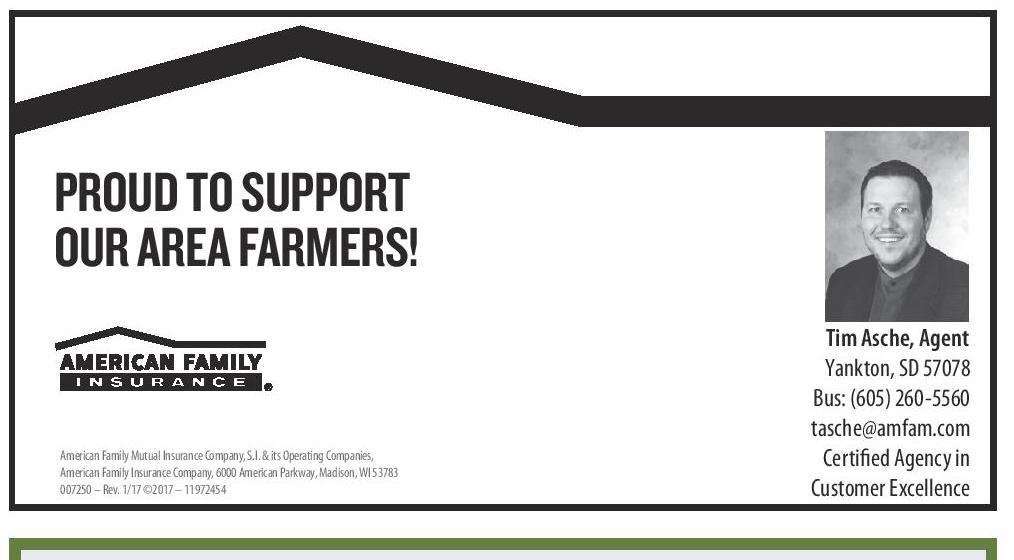





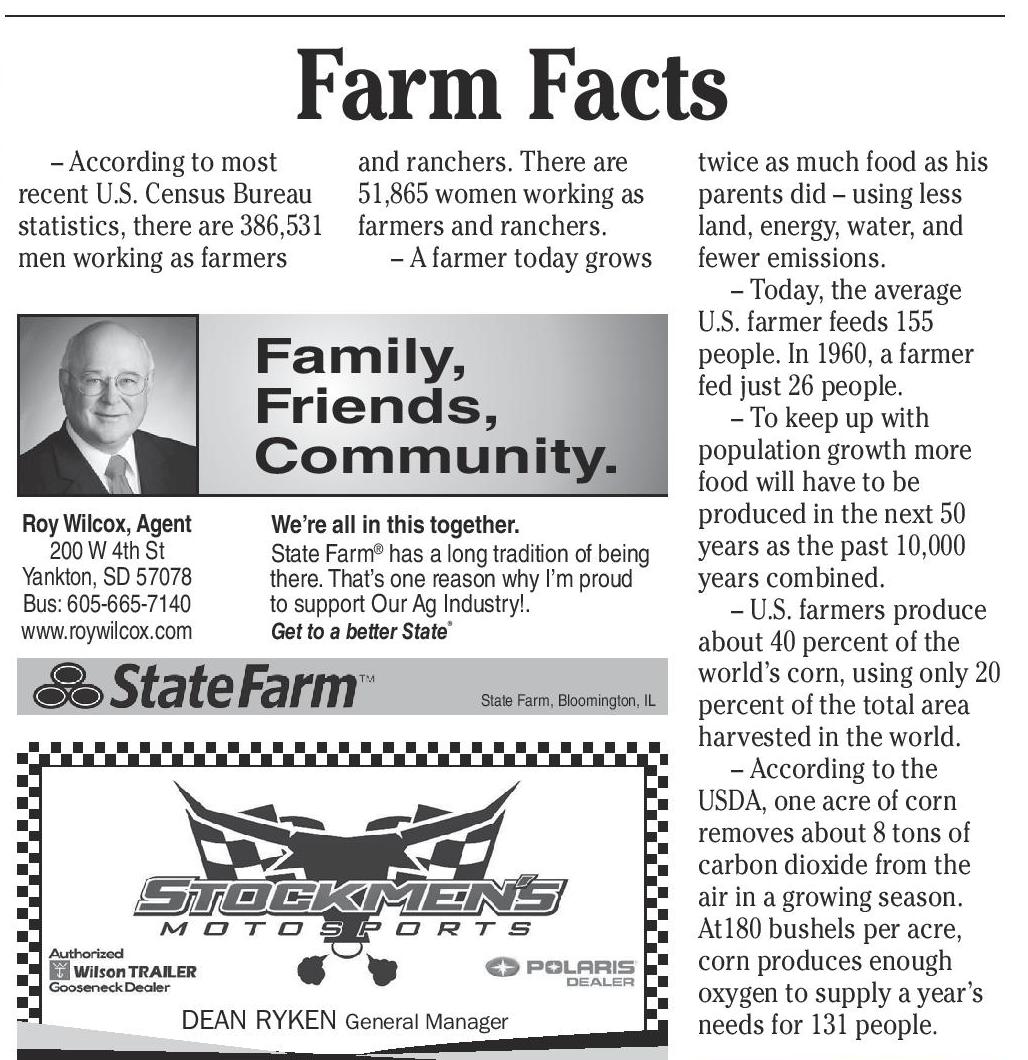






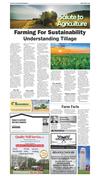


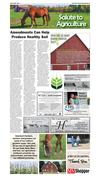


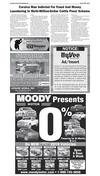
 Previous Page
Previous Page





